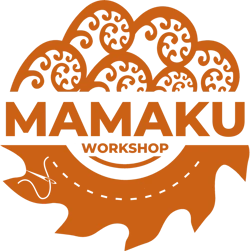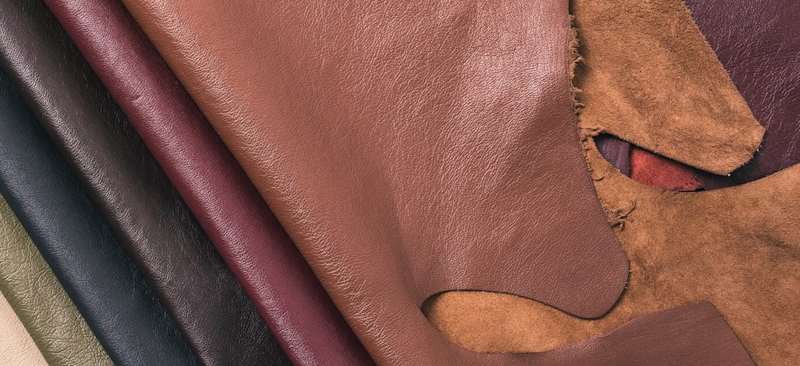Leather and Sustainability
Sustainability is really important to us at Mamaku Workshop, and we aim to make ethical decisions that leave the planet in better shape than before. Some of the aspects of sustainability we consider when looking at products we use include:
- The environmental and ethical cost of the raw materials
- The environmental and ethical costs of production
- The environmental costs of transportation to get that product to us
- The lifecycle of that material – ie is it recyclable and/or biodegradeable?
There are loads of options in the leather world. There are leathers made from different types of animals as well as faux-leather, and there are different tanning processes. Working through the above sustainability questions helped us make an informed decision that supports our overall sustainability objective. As a result, we have chosen to primarily use veg-tanned kangaroo leather in out products. This may seem like an unusual choice at first, so we will explore it a little more below.
Why We Prefer Veg-Tanned Leather
Tanning is the process of preserving skins and turning them into leather, preventing it from drying or rotting. Veg-tanning is a traditional method of tanning leather using natural plant products (eg. tree-bark or leaves) to convert skins to leather. Skins are soaked in natural tanning solutions, and can take up to two months to cure. Veg-tanning results in a thicker, stiffer leather that develops a beautiful patina over time and is very hardwearing and can be carved and stamped to create beautiful, intricate designs. Veg-tanned leather is more expensive than chrome-tanned due to the significantly longer production time. Unfortunately, there are no tanneries in Aotearoa that produce veg-tanned leather locally, so all veg-tanned leather is imported.
Chrome-tanning is an industrialised process that was devised in the mid 19th century, which allows the same preservation of skins to be achieved in a single day using chemicals – primarily chromium. Chrome tanning now accounts for 90% of the world’s leather production, and it results in leather that is thinner, softer and more flexible than veg-tanned leather. It can be dyed vibrant colours which remain unchanged over the life of the leather. It is cheaper and more abundant than veg-tanned leather.
The main drawbacks of chrome tanning are the environmental and health impacts of the process. The chrome tanning process usually involves placing hides in acidic drums or baths, consisting of a mix of chemicals. A by-product of this process is solid and liquid waste that contains leftover chromium and other hazardous compounds. The dumping of untreated waste is commonplace in regions without strong environmental protection standards, some of which are the primary regions where leather is tanned (including China, India, and Bangladesh). It is also hazardous for the workers - chromium is an irritant and a carcinogen, causes a myriad of ailments depending on how it is absorbed.1 The relative levels of environmental damage and risk to workers will depend on the practices of the individual tanneries, and we can expect better outcomes where there is better industry regulation, however even tanneries here in Aotearoa are far from perfect.2 For us, the lower risks of environmental damage and harm to workers is a primary factor in our choice to use veg-tanned leather in our products.
Why we prefer Kangaroo Leather
Living in a country where the farming of cattle is commonplace, it may seem to be an unusual choice to use Kangaroo leather in our products. Indeed, the majority of leather produced in the world is made from the hides of farmed cattle or goats, and these hides are usually a by-product of the meat industry that would otherwise go to landfill. However, livestock farming in general has some pretty significant environmental impacts, including deforestation, green-house gas emissions, water pollution, and high water consumption. These factors all have a negative impact on the overall sustainability considerations of cow hides as our primary source of leather.3
Kangaroo leather, on the other hand, is harvested from wild kangaroos under government-controlled management plans across four Australian states, ensuring the harvest is sustainable and humane. As wild animals, kangaroos have a much smaller environmental footprint than farmed livestock: they do not require the destruction of forests for pastures, they are not fed grain, and they are well adapted to Australia’s arid climate with limited water needs. There is also evidence that overpopulation among the larger Kangaroo species contributes to the decline in a number of smaller species that share their habitats.4
The harvesting of kangaroos is actively managed by the Australian government to ensure populations remain sustainable, and only the most abundant species of kangaroo are able to be harvested. The kangaroo quota is adjusted each year to represent a constant proportion (10-20%) of population size. If abundance falls, so does the harvest quota, and the harvested species remain abundant and widespread.5
As noted above, there are no tanneries operating in Aotearoa that produce veg-tanned leather. Choosing a veg-tanned leather from Australia (rather than, for example, veg-tanned cow hides from Europe or America) also minimises the environmental costs associated with transporting the leather from the tannery to our workshop.
Why We Don't Use Faux-Leather
We accept that for some people, the use of any animal product, no matter how sustainable, will be unacceptable. While we offer options that do not include leather in our product range (eg velvet bags and trays) we have specifically chosen not to use faux-leather products. Although these products are vegan, in our view they perform poorly in overall sustainability considerations. The majority of faux-leather products are really just plastics in disguise – they are often made from PVC or PU, their production processes are harmful to the environment, and the final products are not biodegradable or recyclable.6
We acknowledge that there are some amazing innovative products being developed around the world that offer leather-like alternatives made out of pineapple leaves, cactus, and mushrooms as a few examples, and without significant use of petroleum products in their manufacture. However, unfortunately these products are all manufactured on the other side of the world and are not available on a small enough scale to make them a possibility for a small business such as ours. We sincerely hope that in time these products will be available locally and in quantities that will make them a viable option for us.
Informed Choice Is Important
While we have made choices about the materials we use, we accept that your preferences may well be different than our own. We want our customers to be able to make informed choices about what products they buy, and that is why we will always be clear about the types of leather being used in each of our products. That way you can be sure you can be comfortable with what you are purchasing and where it has come from.
References
1 https://gizmodo.com/how-leather-is-slowly-killing-the-people-and-places-tha-1572678618
3 https://www.fao.org/3/a0701e/a0701e00.htm
6 https://www.popsci.com/environment/leather-sustainability-ethics/ and https://www.thegoodtrade.com/features/vegan-leather-vs-animal-leather provide good accessible summaries of the issues.

